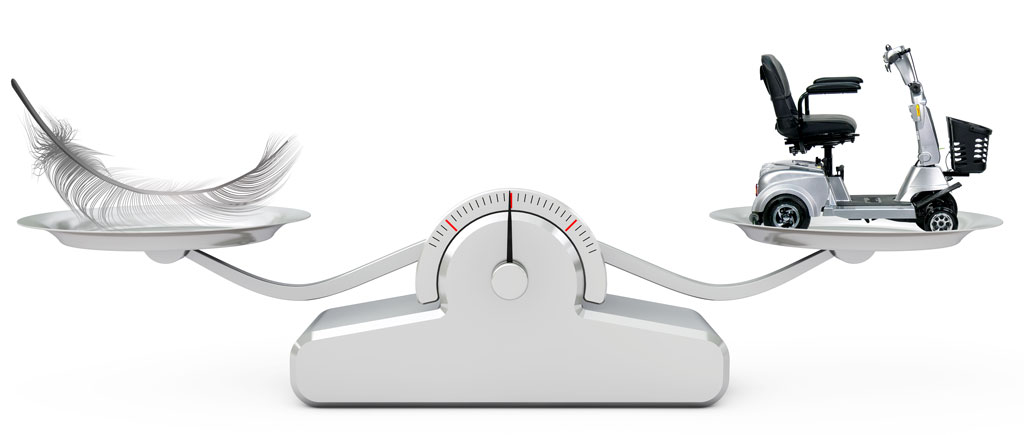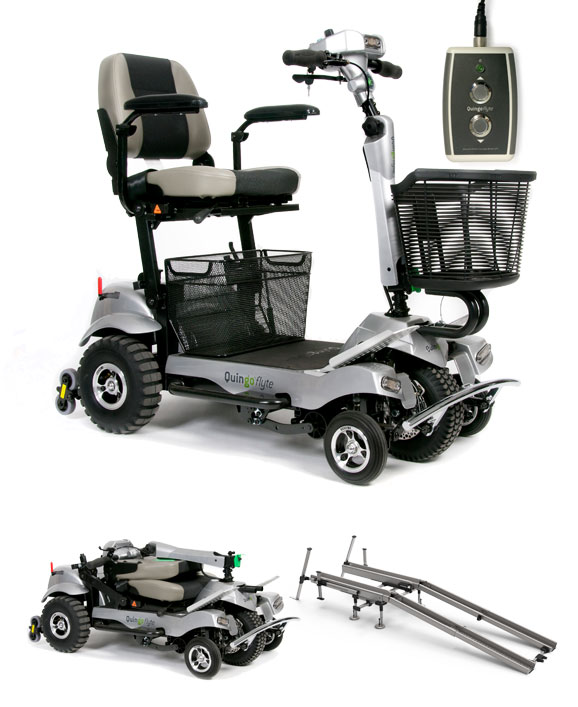The Lightweight Mobility Scooter

The lightweight mobility scooter is almost invariably a scooter with portability close to the forefront in its design.
In order to create a lightweight mobility scooter there are many approaches and factors that can be combined to achieve the desired result.
In order to cut the weight of constituent parts simplified designs are often utilised.
This will regularly lead to reduced function, such as adjustability, being lost.
The tiller will likely be fixed meaning you may have to stretch to reach it or be cramped by the handles being too close. Both of these will additionally make steering your scooter more difficult and, in extreme cases, may even make it unsafe for you to use it.
One other area where comfort can be negatively impacted is the design of your seat. The seat will very likely offer little to no ability to be adjusted to your needs meaning you have to adjust to the scooter rather than the scooter adapting to your needs.
The seat on a lightweight mobility scooter will additionally often have little to no padding or, even worse have scant padding with no attempt to conform to your body’s shape, being more like a pair of boards with a bit of foam stuck to them than an ergonomic, medical device.
These sacrifices in the ability of a lightweight mobility scooter to adapt to the user will inevitably lead to markedly decreased comfort.
In contrast our Quingo scooters offer superior adaptability through the use of our Quintell™ posture control system which benefits from our adaptive footplates, and fully adjustable seats and tillers.
Another way in which weight is cut is by cutting down on the amount of material used in the construction of major components.
This cutting back on component weight can lead to a scooter feeling flimsy.
Lesser power/torque is often a problem caused by the use of smaller, lighter motors and smaller batteries being used and with small wheels often being employed the lightweight mobility scooter can suffer from lower range and can also severely impact stability as well.
This will also make climbing kerbs very difficult something our Quingo scooters achieve with ease.
With our take apart, car boot, scooter, the Ultra, we took a different approach to that of pairing down components to their bare minimum functional size and weight to increase portability. We chose to retain the structural integrity of our design and focused instead on using material technology to lighten our design.
By using aluminium for the chassis, we reduced its weigh to about a third of a steel frame and yet retaining all of its strength and rigidity. And the lightweight ABS bodywork is both stylish and durable.
Furthermore, by taking the approach of allowing the scooter to be disassembled into easily managed, lighter, parts we made lifting the scooter a much easier task to complete.
The added bonus is that multiple smaller components are much easier to stow than one large and bulky item.

However, the ace in our hand in the lightweight mobility scooter game is our self-loading Flyte. By creating a scooter that loads itself, at the touch of a button, using our docking station we have transcended the need for a scooter to be light by removing the need for you to lift it in the first place!
